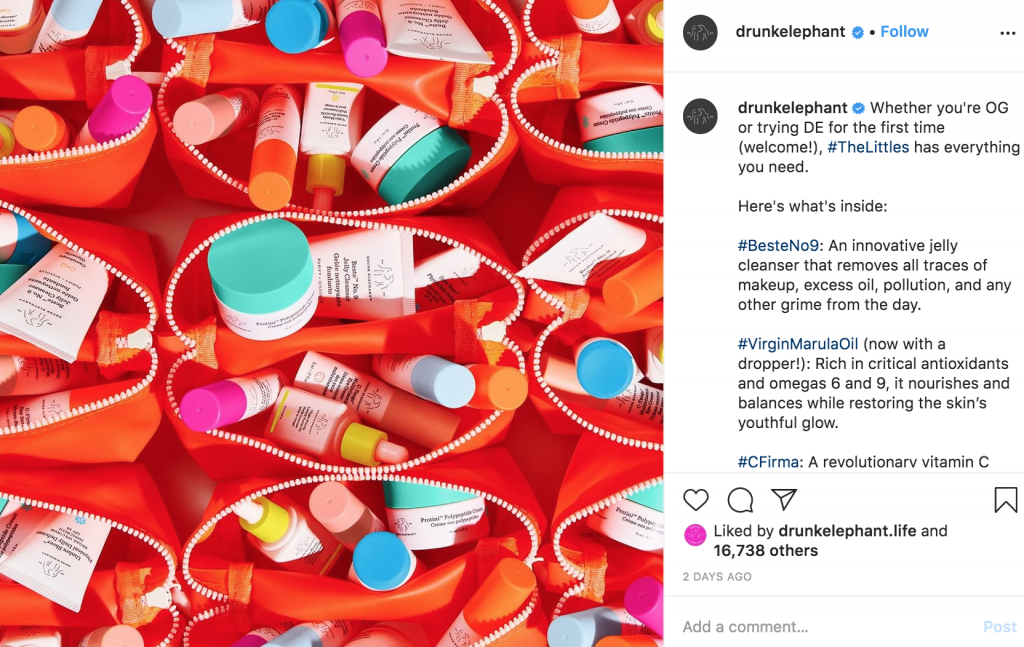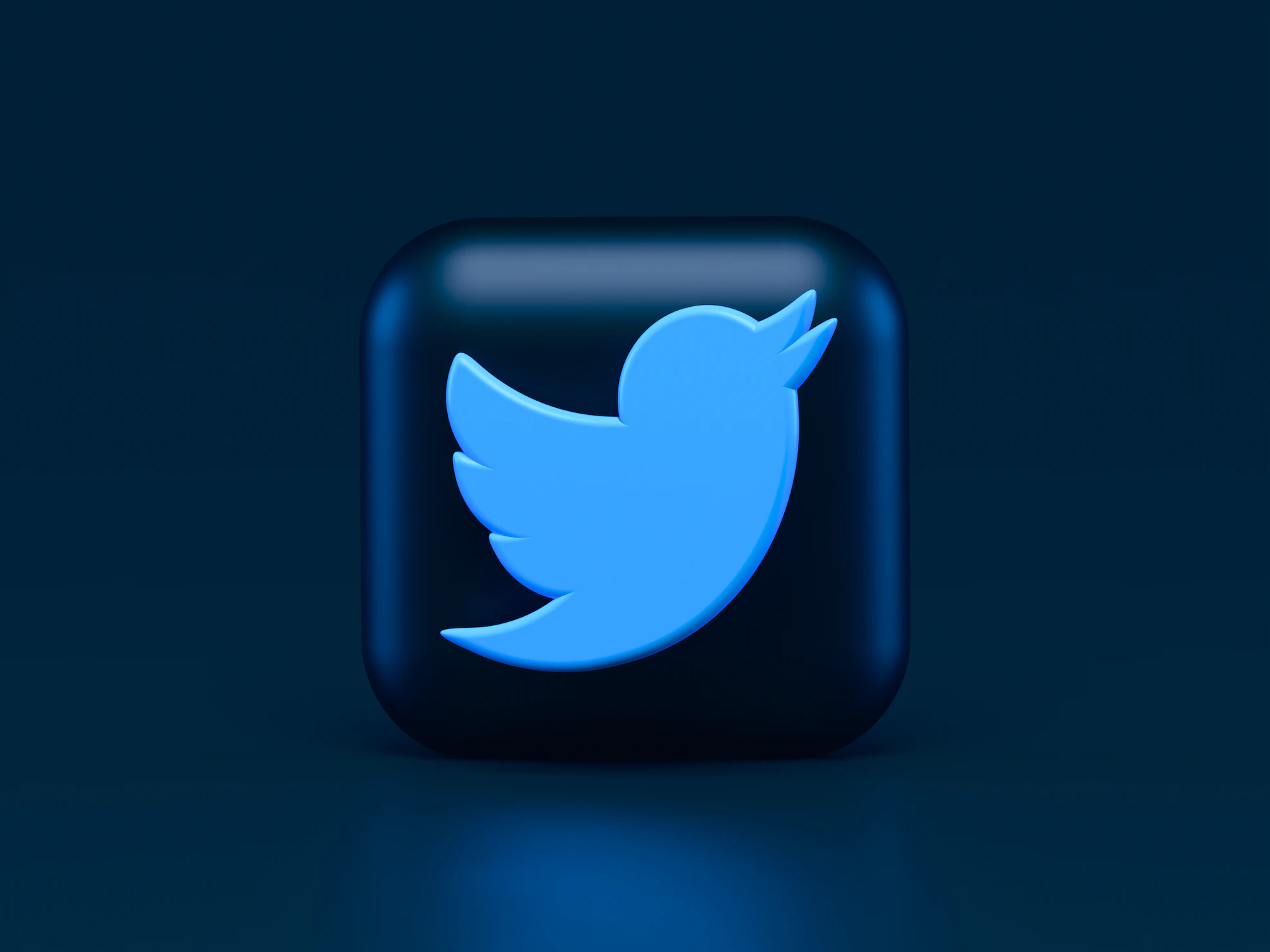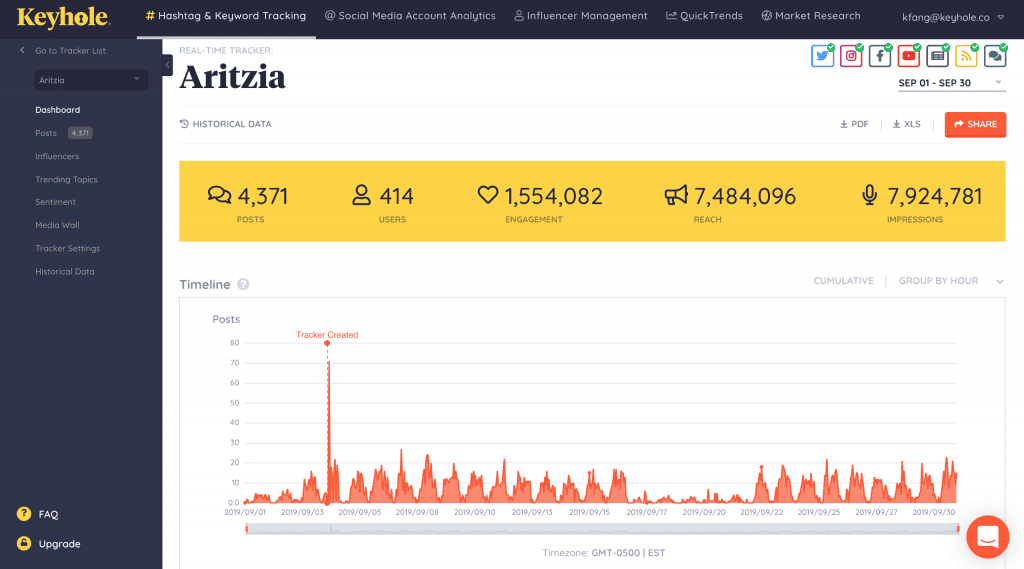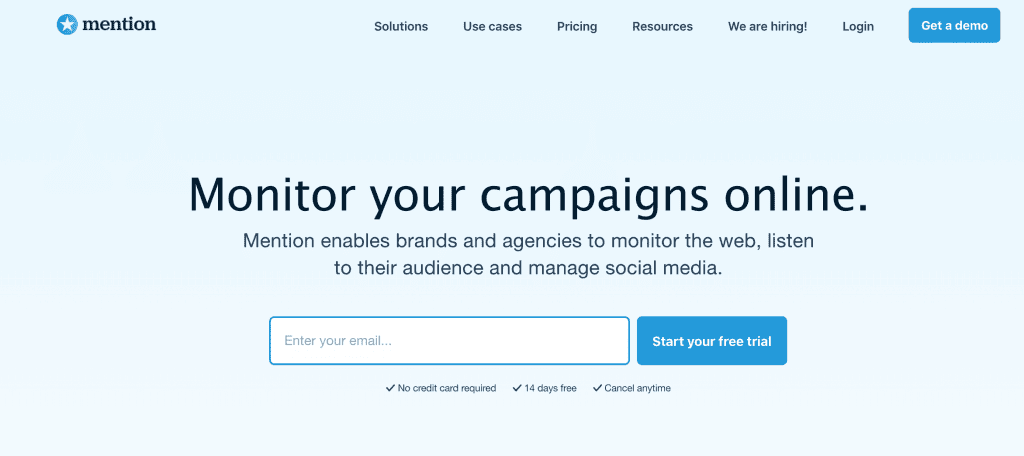Hashtags are a powerful tool in your marketing toolbox, but only if you use them strategically. While most people squeeze them anywhere in their posts, others play-wise and track them.
Luckily, there are several hashtag analytics tools that can take the load off your shoulder.
Using a hashtag tool, you’ll be able to track how your campaign performed but also uncover key findings about your audience and your competitors.
Table of Contents
Why Should I Measure Hashtag Performance?
You should always aim to prove the effectiveness of your marketing campaigns. Here are a few great reasons to measure hashtag performance:
- Measure Reach & Engagement: Learn how many people saw your hashtag
- Identify Your Audience: Track the demographics of the people who use your hashtag
- Segment Your Audience: A/B test your hashtags to find your desired audience
- Identify Influencers: Find influencers that give you the best marketing ROI
- Competitor Research: Benchmark yourself against competitors
- Sentiment Analysis: Track how people feel about your brand
7 Benefits of Measuring Hashtag Performance
Here are the most compelling reasons to closely measure and monitor hashtag performance.
1. Measure Brand Reach & Engagement
The most obvious benefit to measuring your hashtag performance is to know how many eyeballs have seen your content.

Skincare brand Drunk Elephant uses the #TheLittles hashtag to showcase their travel-sized products.
By tracking a hashtag, you can measure exactly how many people have seen, liked, shared, or engaged with a particular campaign.
2. Identify Your Audience
Every business wants to know more about its customers.
Because if you can get into the mind of the customer, you can figure out how best to connect with them.
So what better way than to invite them in on a conversation?
Qualitatively, by monitoring who’s interacting with your hashtag, you can start to build a profile of your audience, and then continue to evolve your content to suit their needs.
Quantitatively, you can get real data that helps inform your strategy.
For example, you can track your branded hashtag to learn if it’s getting the reach in the countries you want to target.
And if it’s not clicking with your country of choice, you can use a hashtag analytics tool to seek out hashtags that are popular in that country.
3. Segment Your Audience
This is one most people miss.
Hashtags can help you find the people in your audience you care most about.
For example, say your brand uses both #HashtagA and #HashtagB, and each is getting equal reach.
Using hashtag analytics, you can analyze each hashtag to see which one is getting reach with the audience you care most about.
For example, you may learn that men prefer #HashtagA, but women prefer #HashtagB. If your true target audience is women, then you should be pushing for the use of #HashtagB.
Over time, you can test and repeat this process to narrow down your campaigns to be most effective for the exact customer you want.
4. Identify Brand Advocates & Influencers
When identifying possible influencers for your brand, your best bet is to choose people who most organically mesh with your product or service.
Therefore, measuring the most popular accounts that have used a certain hashtag is a great way to flag potential ambassadors that would deliver the best ROI.
For example, if you were a national Mexican restaurant chain, you might want to find the most influential people that regularly post on #TacoTuesday, as they’re a natural fit for a collaboration.

Lebron James is a huge advocate for Taco Tuesday, making him a fitting choice for a #tacotuesday campaign.
Or if you already have advocates posting on your hashtags, you can measure which influencers are garnering the most attention. Not only are they more likely to accept a partnership, but their audience is also already suited to your brand.
5. Competitor & Content Research
Don’t just track your own hashtags!
By benchmarking against competitor hashtags, you’ll be able to set reasonable expectations for how your campaign may perform and unlock insights as to what you could be doing better.
Or, to educate your content strategy, you may want to track hashtags in your industry to learn what types of content your target demographic engages with most.
6. Sentiment Analysis
Beyond pure quantity, it’s important to know how people feel about a topic.
Ultimately, your goal is to create a positive sentiment around your brand, so tracking sentiment analysis is another insight into whether or not content on a particular hashtag is positive or negative in nature.
For example, if #CampaignA received more reach than #CampaignB, but #CampaignA had the sentiment that was 20% positive and #CampaignB was 80% positive, you’d likely stick with #CampaignB.
Outside of using sentiment analysis on your hashtags, you can also use sentiment analysis to identify unbranded hashtags that are well-received to try to create a positive brand association.
7. Because You Should Track Everything!
This rule shouldn’t have to be stated, but so many marketers forget:
Everything you do should be traceable back to ROI.
What metrics are most relevant to ROI will be particular to your business, but you should know what your business goals are and the path your hashtag is supposed to take to influence it.
If you can’t back up and justify the use of a particular hashtag with cold, hard data, why are you using it?
Which Hashtag Metrics Should I Track?

What success looks like to your brand will depend on your business and social goals and the metrics you used to track those goals.
Here are some hashtag metrics you can track:
- Posts: How many people posted with your hashtag?
- Users: How many unique users posted using your hashtag?
- Engagement: How many likes, shares, and clicks did your hashtag receive?
- Reach: How people’s feeds did your hashtag show up?
- Impressions: How many times did your hashtag get viewed (including repeat users)?
Please note, reach and impressions are different. Know how impressions are calculated from here.
Keyhole is a real-time conversation tracker that provides keyword + hashtag analytics and social media analytics across platforms such as Facebook, Twitter and Instagram. Get started for free here.
How to Measure Hashtag Performance
By now, you’re convinced that you have to start measuring hashtag performance.
Here’s how to get started:
1. Choose a Hashtag Tracker Tool
To track a hashtag, you’re going to need a hashtag tracker.
At the end of this post, we cover the best hashtag tracking tools.
But to keep things nice and easy, we’re going to use our tool, Keyhole, because it allows you to track hashtags on any major social media platform.
2. Choose Your Hashtag
Within Keyhole, or whichever tool you use, input the hashtag you’d like to track. This may be your own hashtag, a competitor’s hashtag, or a trending topic.
3. Choose Your Platform(s)
Depending on where you’re launching the campaign, you may want to track your hashtag on only one platform (like Instagram), or on as many online platforms as possible.
Make sure you choose a tool that has the platforms that matter most to you.
In Keyhole, you’re able to track keywords and hashtags on:
- YouTube
- News sources, blogs, and forums

4. Consider Your Timeline
Most tools need time to gather data, so you won’t immediately be able to track back retroactively. Or, you may be able to access one or two weeks of data after the tool has time to gather it.
However, if you’re tracking a popular hashtag, you may be able to access historical data.
No matter which tool you use, make sure you set up hashtag tracking before you start a campaign to ensure that you have access to the entire campaign history.
5. Identify Your Key Metrics
Once you have your data streaming in, it’s time to decide what metrics you care most about. It may be all of them, or it may just be a few.
Here are some key hashtag metrics you may want to track:
Posts – How many posts were made with this hashtag?
Users – How many individual users posted with this hashtag?
Engagement – How many likes, shares, comments, and clicks did this hashtag receive?
Reach – How many feeds or timelines did this hashtag show up on?
Impressions – How many times was this hashtag seen?
Do your best to identify metrics in advance that relate most to your business goals.
If you’re trying to drive clicks to your website, engagement matters more. If you’re more focused on positive PR, reach may be more important to you.
Before diving too much into the numbers, consider the business case of tracking each metric.

6. Gain Key Insights
Yes, the above raw data is great, but it’s made much more useful in context.
On top of this data, most hashtag tracking tools will give you a mix of qualitative and quantitative data that makes it easier to make decisions.
Here are some example hashtag insights you can gain from the Keyhole dashboard:
Top Posts – Discover the most engaging or recent posts on your hashtag. This can help you decide what type of content to make in the future, or identify key influencers.
Related Topics – Identify hashtags or keywords related to your hashtag that you may want to use to gain visibility.
Influential Users – Identify the most influential users that used the hashtag, or the users who most frequently engage with the hashtag.
Top Websites – Discover the websites that most frequently mention this hashtag or keyword to unlock potential content avenues for your brand.
Sentiment – Get a breakdown of the reaction to your content, segmented as either positive, neutral, or negative.
Location – Discover which locations most frequently post with the tracked hashtag.
Gender – Get a male/female breakdown for the hashtag.
Devices and Apps – Track your engagement on mobile vs. desktop to tailor your content to the most common audience.
Linked Websites – Discover which websites are most commonly linked to with your hashtag.
Social Media Post Types – See the breakdown of hashtag use by original posts, replies, or retweets.
7. Create Reports
Once you’ve decided which of the above metrics and insights are most relevant to your campaign, you can create a dashboard or report that highlights these metrics.
Most tools, including Keyhole, will also allow you to export these reports to PDF or XLS so that you can make use of the data on other platforms.
8. Take Action
The most important step: don’t let this all go to waste.
Use the hashtag analytics data to your advantage by regularly tweaking, testing, and analyzing your social media strategy on a regular basis.
The more you test, the better your results will be.
Which Is the Best Hashtag Monitoring Tool?
Now that you know how to track hashtag performance, the next thing to worry about is if your chosen tool supports the platforms you use. Though hashtag is a predominant part of Instagram and Twitter, several hashtag analytics tools focus on just one platform. Here’s a list for quick reference.
How to Check Hashtag Performance on Instagram?

Some of the popular hashtag monitoring tools for Instagram are:
How to Check Hashtag Performance on Twitter?

Some of the popular hashtag monitoring tools for Twitter are:
Did you notice how Keyhole was the common name in both? Keyhole is one of the best hashtag analytics tools that support Instagram, Facebook, Twitter, and TikTok — all under one platform!
Reviewing the Top Hashtag Tracking Tools
It’s time to start tracking! To do so, you’ll need to pick a hashtag analysis tool.
Whether you go freemium vs. paid route is up to you, but in our roundup of the top 15 hashtag analytics tools, you’ll discover (unsurprisingly) that paid tools offer far more features, especially when it comes to long-term tracking.
Here’s a quick recap of the five best hashtag-tracking tools:
1. Keyhole
Keyhole is one of the most popular and powerful social listening tools available.

In terms of analytics, Keyhole offers all of the following:
- Campaign and event tracking
- Brand monitoring
- Influencer management
- Market research
- Trend analysis
- Sentiment analysis
- Competitor analysis
But beyond simple data, the true value of Keyhole comes from the insights it provides.
The ability to create customizable reports with intuitive layouts is helpful when it comes to creating actionable insights that lead to real impact and ROI.
2. Mention

Mention is a broader social listening tool that lets you track your brand mentions across the internet.
This includes hashtag and keyword monitoring on social media but also has the added benefit of tracking brand sentiment across the web.
3. Brand24

Brand24 allows you to track brand mentions, discussion volume, influencer data, sentiment analysis, and more.
It also offers the ability to set alerts when conversations on your brand hashtag reach a certain volume threshold, so that you can be ready to participate at a moment’s notice.
4. Hashtagify

Hashtagify helps you explore hashtags to discover the most popular content and influencers around any topic, specializing in Twitter content.
They also have hashtag tracking tools that allow you to monitor your competitors.
5. Sprout Social

Sprout Social is another hashtag analytics tool focused on simple design.
Their tool has intuitive reports that make it easy to see the big picture.
To track your hashtag analytics, start a free trial of Keyhole now. Prove your social media ROI with Keyhole’s extensive analytics. Know the optimal frequency and the hashtags that have amassed engagement to your posts. Knowing how to measure hashtag performance isn’t enough; fine-tuning the process will. And Keyhole help you that precisely!
So go ahead and explore the tool for free!
Related Articles:
5 Valuable Hashtag Marketing Strategies Proven to Engage Audiences
Top 15 Hashtag Analytics Tools
Keyhole is a real-time conversation tracker that provides keyword + hashtag analytics and social media analytics across platforms such as Facebook, Twitter, and Instagram. Get started for free here.
Frequently Asked Questions
How do you monitor hashtag performance?
Hashtags are a powerful tool in your marketing toolbox, but only if you use them strategically. To measure hashtag performance, you'll need a hashtag analytics tool. Using a hashtag tool, you'll be able to track how your campaign performed but also uncover key findings about your audience and your competitors.
How do you check hashtag stats?
It depends on what hashtag you want to track. If it's a branded hashtag, it's better to use a hashtag analytics tool to get detailed stats. However, if the hashtag is generic and you want to know if it's popular, search for them natively on a social media platform and find the number of times that particular hashtag has been used.
What is the best hashtag tracker?
Keyhole is one of the widely used hashtag trackers. It is trusted by global agencies and brands like Google, Amazon, Spotify, etc., for monitoring marketing campaigns and relevant metrics. Try out its trial and track for free.